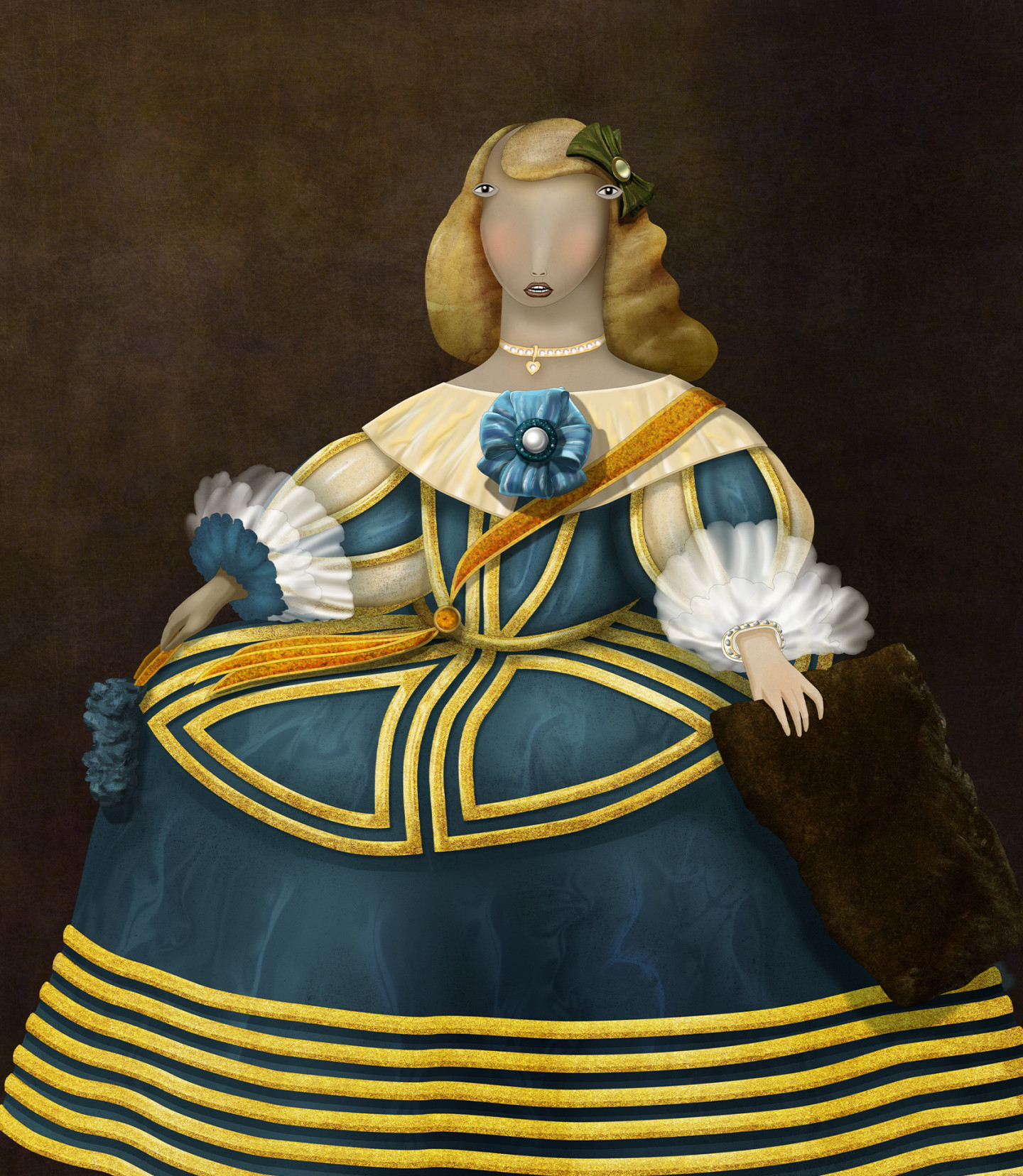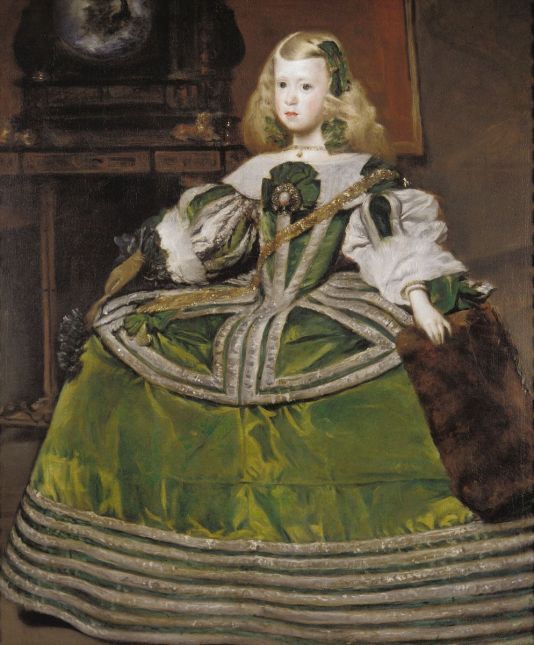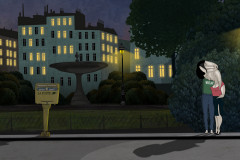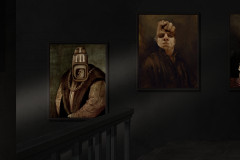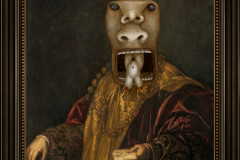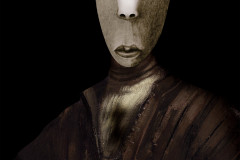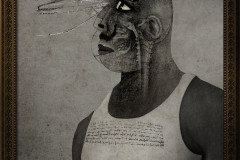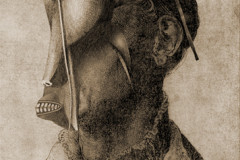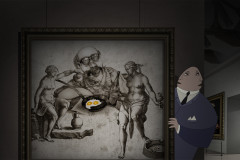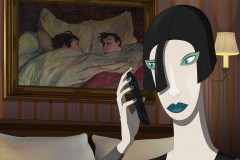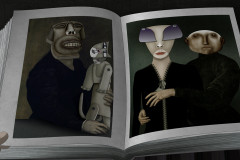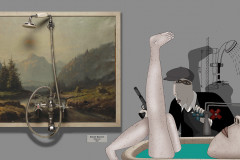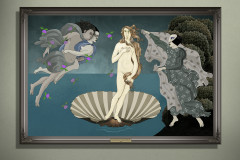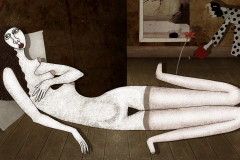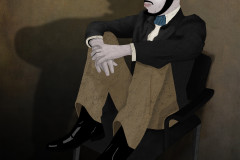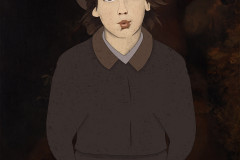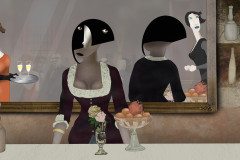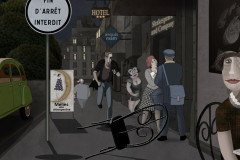Velázquez, Diego után Mazo, Juan Bautista Martinez del (1612-1667): Margarita Teresa infánsnő zöldben 1660k. (olaj, vászon, 121 x 107 cm), Budapest, Szépművészeti Múzeum; IV. Fülöp spanyol király lányát a barokk udvari festő, Velázquez számtalanszor megfestette, de a király még több képet szeretett volna róla – különböző színű ruhákban. A zöld ruhás verziót Velázquez halála után leghűbb tanítványa és egyben veje készítette. A kis királylány támad rá Ruben Brandtra a film elején a vonatablakból, ezért hát a budapesti festmény is a doki gyűjteményét fogja gazdagítani.
Hallottál már a hírhedt spanyol udvari etikettről? Ez az a hihetetlenül merev viselkedési, öltözködési kultúra és szabályrendszer, amelyben a királyi család tagjai szinte megközelíthetetlenek, és amelyben például előfordulhatott, hogy a király lába égési sérüléseket szenvedett, mert épp nem volt jelen az az ember, akinek illett volna eltávolítania a kandallóból a király lábára hulló parazsat. Itt volt gyermek a képen kb. 10 éves Margarita, aki a korabeli beszámolók szerint az embertelen kötöttségek ellenére is kis színt, elevenséget és bájt vitt az udvar életébe. Ő szerepel a neves spanyol udvari portréfestő, Velázquez leghíresebb képén, az Udvarhölgyek-en is. Azon a képen még csak 6 éves, s tagadhatatlanul több csillogás és gyermeki frissesség van benne, mint a 10 éves kori portrén, ahol a hatalmas zöld ruha mellett a sápadt bőrű kislány mintha egy kalitkában állna. A kép kék ruhás verzióját még Velázquez festette, Mazo híven követi mesterének kompozícióját, hiszen óriási megtiszteltetés volt számára, hogy udvari festőként Velázquez nyomdokaiba léphetett, aki nem csak festőként, hanem diplomataként, udvarmesterként, s a királyi gyűjtemények felelőseként is szolgálta a királyt. Műhelyéből pedig úgy kerültek ki a királyi család tagjait ábrázoló portrék, mint manapság az udvari sajtófotók. A leányokról készült portréknak nagy jelentősége volt, hiszen sokszor ezek alapján (is) választottak maguknak házastársat az európai uralkodóházak házasulandó férfi tagjai. Magarita Teresa 16 éves korában első unokatestvérének, I. Lipót osztrák császárnak és magyar királynak a felesége lett, 4 gyermeknek adott életet, s 22 éves korában már meg is halt. Talán ez elől a tragikus sors elől kér kétsébeesetten segítséget Ruben Brandt rémálmában? Aztán persze maga is támadásba lendül...
After Diego Velázquez, by Juan Bautista Martínez del Mazo (1612–1667): Infanta Margarita Teresa in Green, c. 1660
(oil on canvas, 121 × 107 cm, Museum of Fine Arts, Budapest)
Philip IV of Spain’s daughter was painted numerous times by the Baroque court painter Velázquez, but the king wanted even more portraits of her — in different colored dresses. The version in the green dress was painted after Velázquez’s death by his most faithful student and also son-in-law. The little princess attacks Ruben Brandt from the train window at the beginning of the film, so this Budapest painting also ends up in the doctor’s collection.
Have you heard of the infamous Spanish court etiquette? It was an incredibly rigid system of behavior and dress codes that made members of the royal family nearly inaccessible. In fact, it’s said that the king once suffered burns on his leg because the person whose job it was to remove embers from the fireplace wasn’t present. The approximately 10-year-old Margarita in the painting was a child in this rigid world, who, according to contemporary accounts, managed to bring some liveliness, color, and charm into the otherwise stifling court.
She appears in Velázquez’s most famous painting, Las Meninas (The Maids of Honor), at age six, full of sparkle and childlike freshness. By the time of this portrait, at age ten, much of that freshness seems lost. Pale and standing inside the vast green gown, she looks almost caged. The version in the blue dress was painted by Velázquez himself; Mazo closely follows his master’s composition here — a great honor for him, having taken over as court painter after Velázquez. Velázquez served not only as painter, but also as diplomat, court chamberlain, and curator of the royal collections.
Portraits of royal daughters had special importance, as they often served (alongside other considerations) as the basis for selecting husbands among European noble houses. Margarita Teresa married her first cousin, Leopold I, Emperor of Austria and King of Hungary, at age 16. She bore him four children and died at just 22. Could it be that, in Ruben Brandt’s nightmare, she’s desperately calling for help to escape her tragic fate? Then, of course, she strikes back herself...
Let me know if you'd like a visual reference of the painting.






